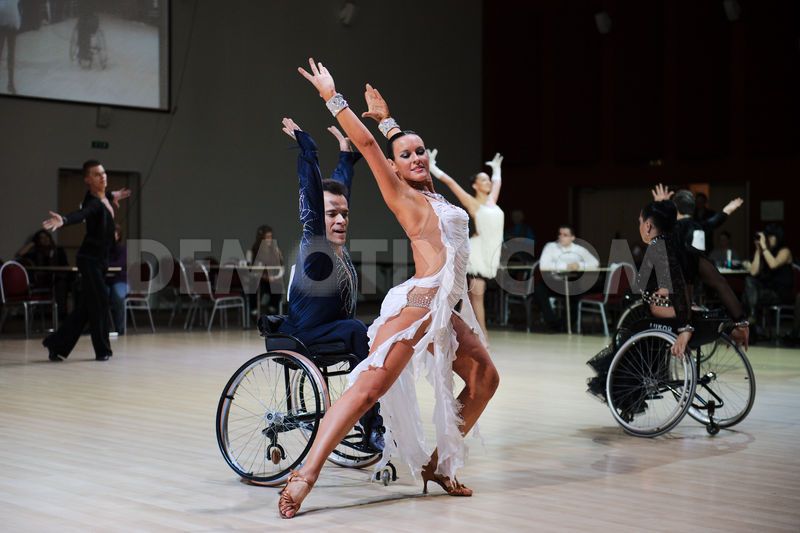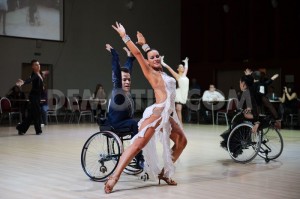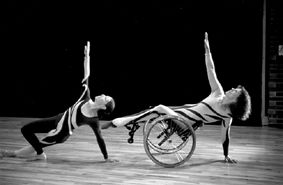
People who have always used a wheelchair, people learning to use a wheelchair for the first time, and even pro dancers, practice wheelchair dancing. At the beginning, Scottish therapists realized that teaching people how to use their wheelchairs was easier with music. Music helps people remember things better, while choreography helps train muscles to complete repetitive movements. Dancers mostly participate in the sport for fun, or as physical therapy. Used as a therapy, wheelchair dancers report greater balance, flexibility, and respiratory control. The constant movement strengthens their coordination and ability to move. Dance encourages celebration of the body in a unique way. Through grueling practice, the dancers are reminded of their physical capabilities and challenged to develop new ones.
Many traditional dances are used in wheelchair dancing, including the waltz, foxtrot, and even the cha-cha. Groups of dancers dance in multiple categories. A “combi” is a partner combination where only one of the dancers is in a wheelchair. Two dancers in wheelchairs is called a “duo.” Even more people are required for “formation” dances, where an even number of dancers work together to form complex patterns. Both power and manual wheelchairs are used, depending on the demands of the dance.  Though the sport developed in Sweden, championships are now held internationally. The UK selects their dancing representative at the European Championship by filming a reality tv show about the competitors. The couple that wins gets to compete at the next level. This has helped raise awareness and excitement about the sport.
Though the sport developed in Sweden, championships are now held internationally. The UK selects their dancing representative at the European Championship by filming a reality tv show about the competitors. The couple that wins gets to compete at the next level. This has helped raise awareness and excitement about the sport.
Check out this incredible wheelchair dancing:
Even Gertrude Weaver, one of the top ten oldest people ever, participated in the sport until her death two years ago. At her age, she did it more for the therapy than for the competition. The daily practice helped develop her upper body strength, while the choreography kept her mentally sharp. She credited her wheelchair dancing as one of the things that helped her make it to be so old.
Many dancers, empowered by their new skills, have begun to wonder how to improve wheelchairs even further. How would wheelchairs with pre-programmed movements or balance controls change the way we use wheelchairs? Instead of just being a piece of necessary equipment, dancers and their supporters are beginning to dream of ways to incorporate the wheelchairs as an essential part of the dance. Dancers for Cirque Du Soleil and Broadway often use props as part of their dance routine. Wheelchair dancers have begun to ask how they too can use the wheelchairs as props instead of equipment. Their questions could result in new wheelchair designs as technology moves to meet the dream.
Wheelchair dancing provides a unique exercise experience for wheelchair users. By celebrating the body and challenging the participants, this form of dance empowers everyone to imagine new ways of thinking about wheelchairs.




